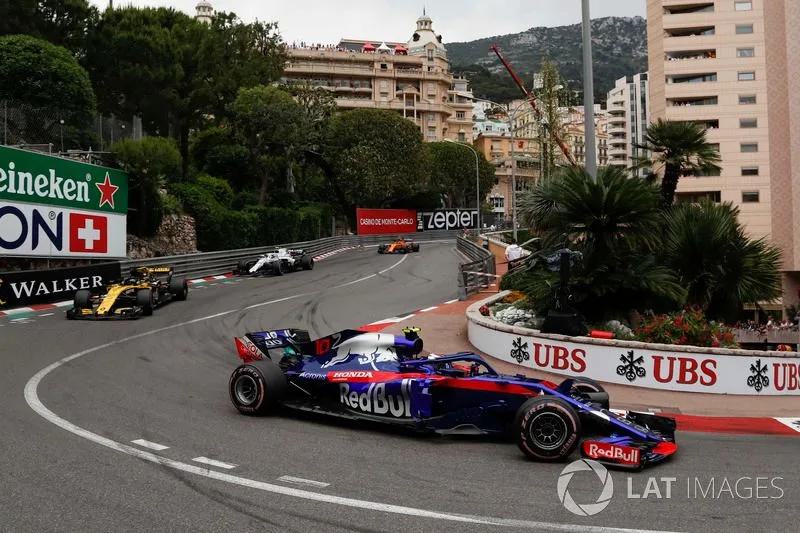A lack of action and overtaking in last weekend’s Monte Carlo race, where the top ten drivers finished in the same position they started, has triggered calls for potential rule changes to help spice it up.
Perhaps the most sensible idea has come from Mercedes driver George Russell, who reckoned that bringing only soft tyres to Monaco – rather than the usual three different compounds – would serve to add some jeopardy.
PLUS: The tools F1 has to fix its racing problems without using a sledgehammer
Pirelli’s head of car racing and F1 Mario Isola said he would be happy to get teams to provide some simulation data on how such a soft-tyre-only race would play out, but he is not convinced it will change things dramatically as it will force even greater tyre conservation.
“I’ve heard the proposal and I spoke to George actually, who told me about it,” said Isola. “I believe that we can ask the teams to make a simulation and see what happens.
“But in 2018 when they were running softer tyres, if I remember well, they were running eight seconds slower than the potential of the tyres – which was F2 pace.”
Isola said that delivering softer tyres for Monaco would not necessarily force extra pitstops and instead would likely just make drivers back off even more to keep their rubber alive.
“The problem in Monaco is that you cannot overtake, so you can slow down by 2/3/4 seconds per lap and nobody can get past you,” he noted.
Pierre Gasly, Scuderia Toro Rosso STR13
Photo by: Motorsport Images
“What is important, in my opinion, is that we have to consider not just the tyres, but why a team decides to stop or not.
“It is a combination of tyre degradation, how easy it is to overtake and the time you spend in a pit stop. Imola is a good example, because if you take 28 seconds for an additional pit stop, you try to not take it.”
Isola said suggestions of mandating a minimum number of pitstops would also not bring any added value, because teams would likely then lock into the same strategies.
“I remember that many years ago, when there was this proposal [to force two stops], we had the discussion and the teams asked their strategy engineers to make a simulation,” he explained.
“The result was that everyone came back with more or less the same strategy. So by adding constraints, we are not pushing them to have different strategies or different approaches to the race, but just to converge to the same…
Click Here to Read the Full Original Article at Autosport.com – Formula 1 – Stories…

